
There are lots of good reasons to use gasoline engines to power your model airplanes. When you fly giant-scale airplanes, reliable engine performance is of upmost importance. Generally speaking, gas engines are also very easy to start and run very consistently while producing their peak power at lower rpm settings than glow engines of similar displacement. These lower rpm tend to produce lower noise levels while also burning less fuel per minute as compared to nitro burning 2-strokes. And there’s the added benefit that gasoline is a lot cheaper than nitro glow fuel.
But as with all things RC, to operate properly, your gas-fed engine needs to be installed and set up correctly. Let’s take a closer look.
Installations start with properly centering and attaching your engine to the model. This can be done with soft or hard-mounting points. Hard point mounting can be as simple as drilling holes in the firewall and bolting your engine directly into place. For engines with rear mounted carburetors, this will often require using long metal standoffs. In both cases, the mounting hardware (nuts and bolts), need to be secure and tight. For lightly built airframes, soft mounts are often used. These include rubber isolators that separate the mounting bolts from the firewall. They also minimize the amount of engine vibration that finds its way to the rest of the fuselage structure. Be sure to follow the airplane’s instructions for side and down engine thrust angles.
This story is from the {{IssueName}} edition of {{MagazineName}}.
Start your 7-day Magzter GOLD free trial to access thousands of curated premium stories, and 9,000+ magazines and newspapers.
Already a subscriber ? Sign In
This story is from the {{IssueName}} edition of {{MagazineName}}.
Start your 7-day Magzter GOLD free trial to access thousands of curated premium stories, and 9,000+ magazines and newspapers.
Already a subscriber? Sign In
Legend Hobby / Seagull Models - Cessna Grand Caravan 208
The Cessna Grand Caravan 208 is a legend in aviation circles. A single engine utility aircraft that punches up with capabilities that rival many twin engine aircraft in its class. Its seemingly simple configuration belies its near extreme utility.
PROPER CG LOCATION FOR AEROBATICS
If you are getting into aerobatics and are starting to perform more advanced maneuvers, it is time to discuss ways you can not only become a better pilot, but how you can also improve the flight characteristics of your airplanes.
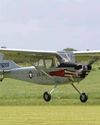
Legend Hobby 13-Foot L-19 Bird Dog/ Cessna O-1
This famous multi-mission single engine observation aircraft served from 1950-1974. From calling out target locations to providing intel/recon information, the Bird Dog was a valued asset in both the Korean War and Vietnam.
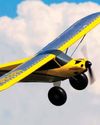
EARN YOUR WINGS
10 Tips for First-Flight Success
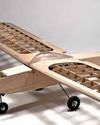
Old School Model Works Fifty Six
The Fifty Six takes its design cues from the original .09- to .15-size Carl Goldberg Falcon 56 of the 1960s. Reworked to incorporate modern, lasercut techniques to make kit building better than ever.
FLYING TWINS Multi-engine warbirds made easy
Let’s face it, there’s just something extra special about twin-engine RC aircraft. Most modelers stop what they’re doing when a twin fires up on the flightline.
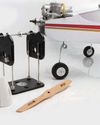
HOW TO BALANCE PROPELLERS
Four easy steps to increase performance and reduce vibration
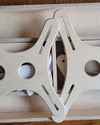
PRODUCT REVIEW: RC PLANE STANDS BENCHTOP MODEL
I’m a sucker for shop stuff. I buy tools I will probably never use just because they are cool, or I might need to use them someday. When Glen from RC Plane Stands reached out about a review, however, I knew as soon as I browsed their website that I would be receiving something I would use a lot, maybe even daily.
SPIRIT OF RHINEBECK AWARD WINNER
A close up of Norman Malinowski’s 1/3-scale Albatros
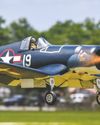
CENTER OF GRAVITY BASICS
The secret to a plane that flies well